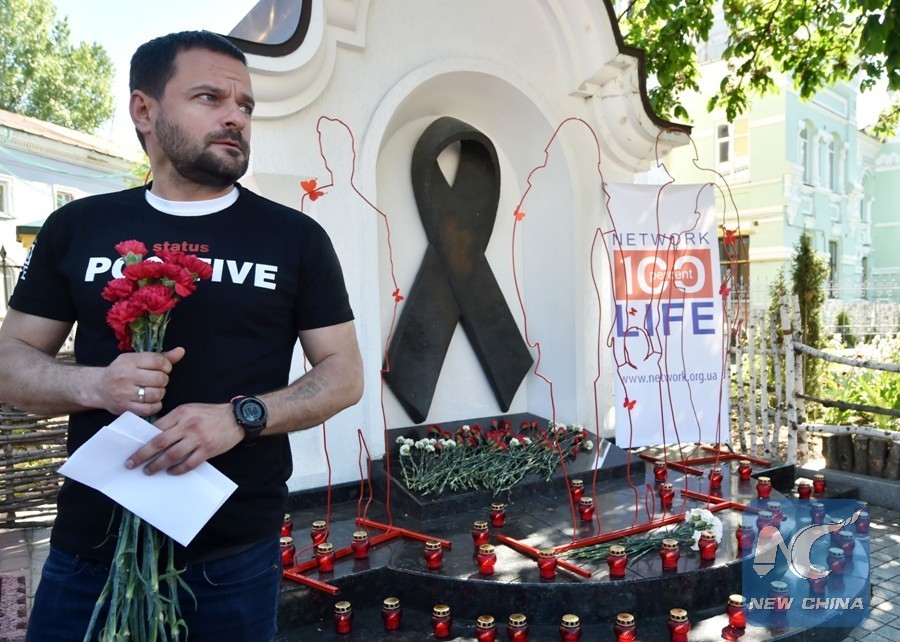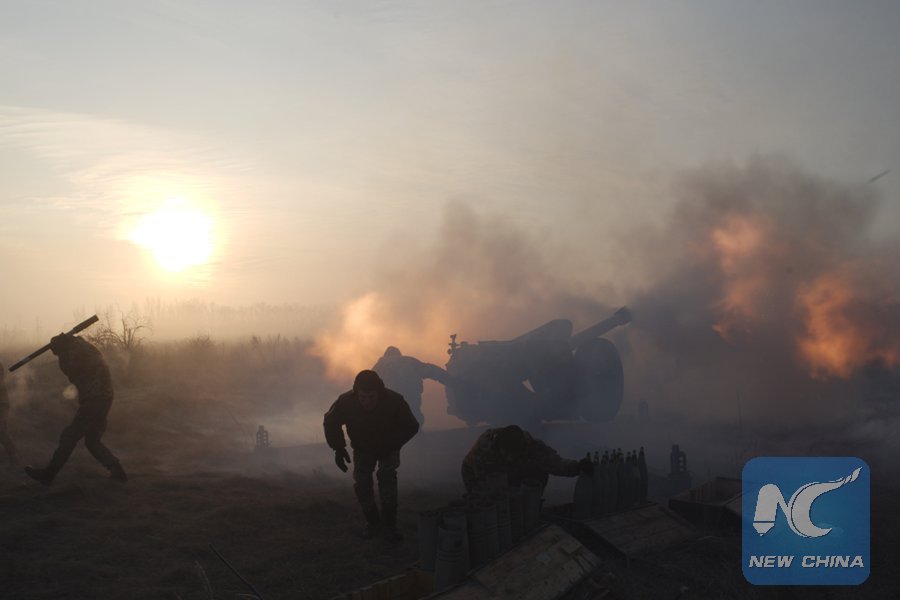
An HIV-infected man wearing T-shirt with signing "Status positive" stands as he holds flowers at the Red Ribbon Memorial in Kiev on May 15, 2017, during the ceremony marking the International Memorial Day of People Who Died from AIDS. (Xinhua/AFP)
WASHINGTON, Jan. 15 (Xinhua) -- Conflict in eastern Ukraine that erupted in 2014 has escalated the spread of HIV throughout the country as millions of people were uprooted from their war-torn homes, researchers said on Monday.
An international team of scientists led by Oxford University and Public Health England (PHE) analyzed genetic sequences to reconstruct viral migration patterns and found that the war-related movement of 1.7 million people was associated with the dissemination of HIV in Ukraine.
Specially, areas with a high prevalence of risky sexual behavior were the main recipients of the virus, according to the study published in the U.S. journal PNAS.
Ukraine, a country of only 45 million people, has the highest HIV prevalence in Europe, with an estimated 220,000 infected.
"In this study we found that virus migration has increased rapidly and follows a westward pattern," lead author Tetyana Vasylyeva, a PhD candidate in Oxford University's Department of Zoology, said in a statement.
"Donetsk and Lugansk, two large cities in the east of Ukraine that have not been controlled by the Ukrainian government since 2014, are the main exporters of the virus," Vasylyeva said.

Ukrainian servicemen fire an artillery weapon in the direction of positions of the armed forces of the self-proclaimed Donetsk People's Republic near Novoluhanske in Donetsk region, Ukraine, January 11, 2018. (Xinhua/REUTERS)
The study's findings, based on data collected between 2012 and 2015, are in line with previous work on the spread of HIV throughout the western world, which was shown to have mirrored geopolitical events.
"Our analysis suggests that harm reduction services should be scaled up in order to prevent further transmission of HIV in the country, and that international support should be provided to prevent a potential new public health tragedy," said senior author Gkikas Magiorkinis, formerly of Oxford University/PHE and now of the National and Kapodistrian University of Athens.
The researchers also found in 2015 the prevalence of virus resistance against drugs that can be used for pre-exposure prophylaxis (PreP), a common treatment to prevent HIV infection, was 34 percent, much higher than that of other European countries.
"Our findings suggest that in Ukraine this method could be undermined in the near future. Further work is needed to confirm this worrying preliminary observation," Magiorkini said.
The HIV epidemic in Ukraine started in the 1990s with an explosive rise in the number of new infections in people who inject drugs, but today 70 to 80 percent of new infections are reported to be in heterosexual people who don't inject drugs.
The new study called it "a silent epidemic" because about 50 percent of HIV-infected people in the country are unaware of their infection status and around 40 percent of newly diagnosed people are in the later stages of the disease.

